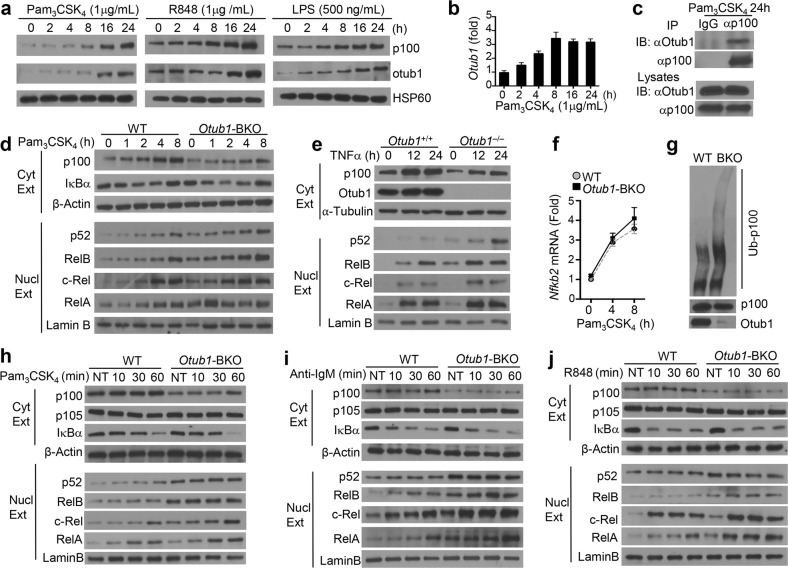Fig. 3.
Otub1 maintains p100 stability and prevents abnormal canonical NF-κB activation. a Immunoblot analysis of the indicated proteins using whole-cell lysates of wild-type splenic B cells stimulated with the indicated TLR ligands. b qRT-PCR analysis of Otub1 mRNA in Pam3CSK4-stimulated wild-type splenic B cells. c Whole-cell lysates of Pam3CSK4-stimulated (24 h) wild-type splenic B cells were subjected to IP using either a control IgG or anti-p100 followed by detecting the co-precipitated Otub1 and p100 by immunoblot (upper). Otub1 and p100 expression level was also analyzed by immunoblot (lower). d, e Immunoblot analysis of the indicated proteins using cytoplasmic or nuclear extracts of wild-type (WT) and Otub1-BKO splenic B cells (d) or Otub1+/+ and Otub1–/– MEFs (e) stimulated as indicated. f qRT-PCR analysis of Nfkb2 mRNA in wild-type splenic B cells stimulated with Pam3CSK4 for the indicated time periods. The value given for the amount of PCR product present in wild-type at time 0 was set to 1. g p100 ubiquitination (upper) and immunoblot (lower) analysis using whole-cell lysates prepared from wild-type (WT) and Otub1-BKO splenic B cells that were stimulated with Pam3CSK4 for 8 h and then incubated with MG132 for 2 h. h–j Immunoblot analysis of the indicated proteins using cytoplasmic or nuclear extracts prepared from wild-type or Otub1-BKO splenic B cells stimulated as indicated

